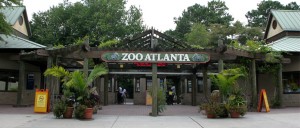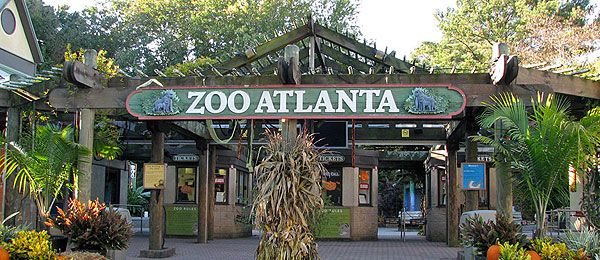
The Atlanta zoo located in Atlanta Georgia excludes poor and homeless people from the entering because they cannot afford the admission fee. In Schindilar’s article Architectural Exclusion: Discrimination And Segregation Through Physical Design Of The Built Environment he talks about the way our Architectural environment is designed unconsciously effects the way people act and people are mostly unaware. The way the Atlanta Zoo is designed also determines the type of it attracts which is usually 2 or more people and mostly families and school groups. Its interior design also effect visitors behavior, the animals they see first and consumption of food as well as the type of food visitors will eat. For example, the fact that you find food stands of some kind at every open space, the odds are sooner or latter your going to stop to get something to eat at least once. Architectural Exclusion is designed to keep a certain type of people or social group from entering a particular area, it effects how people interact with one another and their environments. Weather the Atlanta zoo is intentionally trying to discriminate is hard to discern however, it can be argued that it excludes a certain group of people and that is does effects people’s behavior .
The admission price for the Atlanta Zoo is 22.99$ for people 12+ and 16.99$ for children 3-11 and seniors 18.99 if you buy the tickets online, and if you buy the tickets at the gate then it 25.99$ for people 12+ and 17.99$ for children 3-11 and seniors $21.99. This excludes most poor people and all homeless people from entering the zoo. The average poor family makes round 14,000 a year and that’s usually with government aid and befits, which results in the poor spending more money than they make. So lets say the average family decided to go to the Zoo the average family being 2 adults and 2 kids and they go to the zoo 2 times a year, they would spend somewhere from $100-140. So the average poor person is not going to spend their money on such a expensive place, which means you need to be financially well off to visit the zoo especially regular visit. While it might not be intentional this is a form of exclusion.
For example, in Sarah Shindler’s article Architectural Exclusion: Discrimination and Segregation Through Physical Design of the Built Environment she talks about how the built environment is “characterized by man-made physical features that make it difficult for certain individuals-often poor people and people of color to access certain places.” The two main reasons that people fail to recognize this is that challengers, courts, and lawmakers don’t really view architecture as a form of regulation and even if the lawmakers/people who are excluded recognize architecture regulatory power the existing legal system is insufficient to address its harm. Like how the low hanging archway in New work prevented buses from entering and going to Jones Breach. Since poor people and people of color used the bus as their main transportation they lacked access to the beach. Another example is the halt on the expansion on Marta Station by white people who do not want Marta to expand into the suburb. Showing how architecture can be used to affect people’s interaction to their environment.
The interior design of the zoo also effects visitors behaviors, the first thing people see when they see the zoo are these pink flamingos, so if you want to see the bigger animals like elephants or a fiercer type of animal like lions you have to go deeper into the zoo. Which brings up my next observation at every open space at the zoo there’s some kind of food stand or soda not including any of the restaurants which means people will stop at least once to buy a snack or get a drink. Winding paths and wooden signs designed to make it easier for people to get from one animal exhibit to another. The Zoo is designed to draw people further into the zoo, so the can spend more money.
All of the examples are clear sign that architectural design effects people’s behavior, which means architectural discrimination is also possible. However, trying to prove that the Atlanta Zoo is trying to exclude people would be very hard if not impossible because you must prove intent. Proving the intent to discrimination is one the hardest things for those who enforce anti-discrimination laws. However, the Atlanta Zoo is clearly discriminating by allowing people in the army into the Zoo free, while everyone one else has to pay. I don’t believe there’s any malice attention in this action at all, but how is it fair a person in the army gets in free but people who can’t afford to spend that kind of money on admission fee have to pay if they want to get in.
Architectural Exclusion also effects the way people view others, whether they are consciously aware of this or not. For the people who can afford to get in they would feel more privilege, that they’re better than poor and homeless people who can’t get in. Now when must people see a homeless or poor person struggle they pity that person, but to pity someone you have to feel your better off than that person. This kind of think always works vice versa meaning that a poor and homeless person would most likely feel left out by the Atlanta Zoo or look down on well to off people.
A possible to solution this problem is it decrease the admission fee at the Atlanta zoo. To make it free for kids 8 and under, 7$ for kids 9-12 and 13$ for people 14 and older. Another possible solution is to have one day every other week where people can get in free for a limited time. This might seem like a like a lot to ask but if the Atlanta zoo can give discounts to toddlers, soldiers and senior citizens, even people who order their tickets online Surely they could work outa solution for poor and homeless people if they wanted to.
The our environment is deigned effects the way we interact with our environment and other people which people are mostly unaware of. The interior design effect the behavior of people visiting the zoo, like placing food carts in every open space area to persuade people to but something to eat. The Atlanta zoo also, excludes poor and homeless people from entering because of the high price it charges people. This is includes a certain type op people from entering the buildings this is architectural exclusion. Now wither it’s intentional or not is hard to tell, and very hard to pprove the intent to discriminate.
Sarah Schindler. “ Arechetictural Exclusion: Descrimination and Segregation Throught physical design of the built environment. 124:6. Web. 1/17/2016

